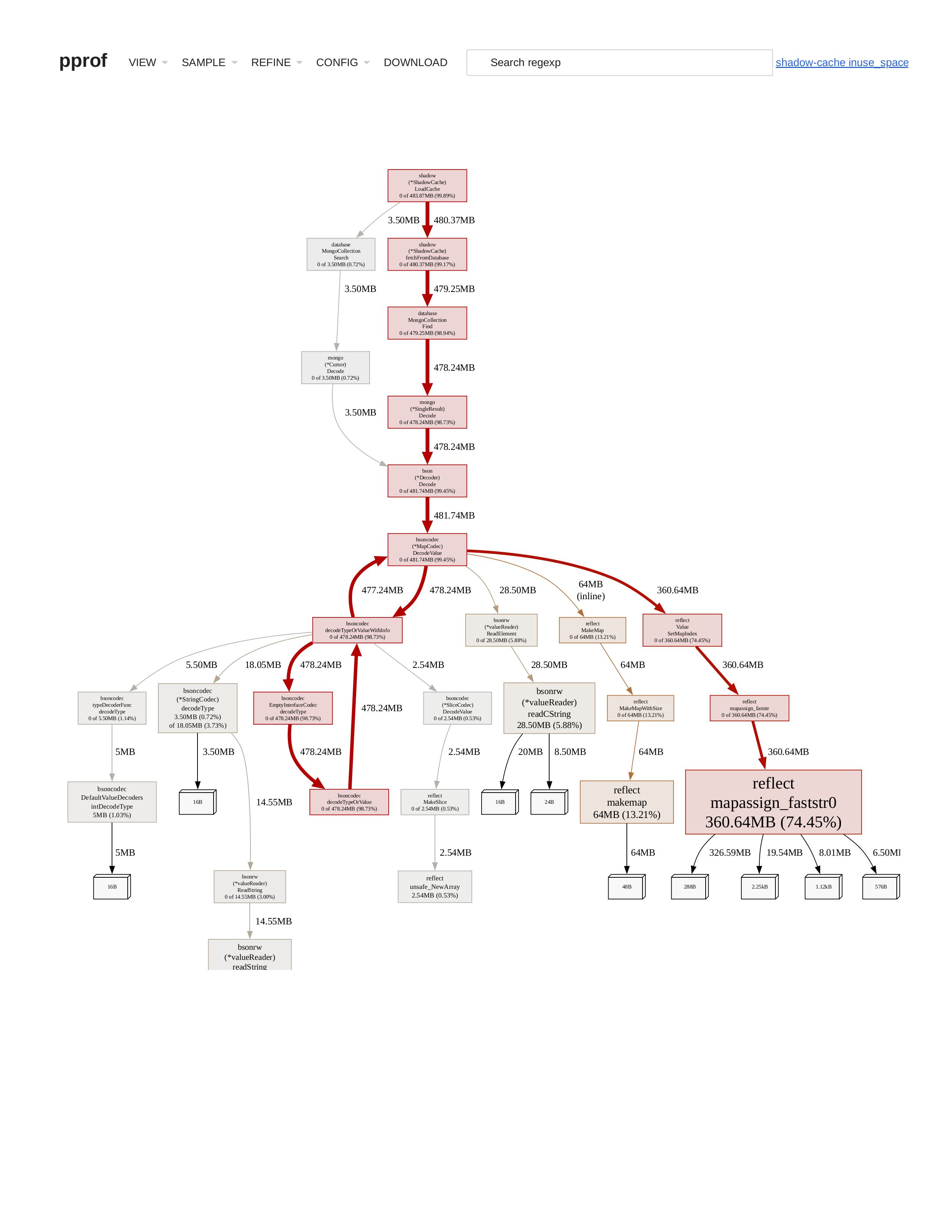How are you measuring memory storage size? Are you sure you are looking as resident memory size and not just the virtual memory size?
Actual storage of the structures should be nothing. Interfaces are "fat pointers" but that should really just be an extra word which node would have at least that if not more.
My guess is that if you are looking at virtual memory that more memory/garbage is produced in PARSING and not storing and that the virtual memory size allocated is high even after garbage collection but RSS should be different.
